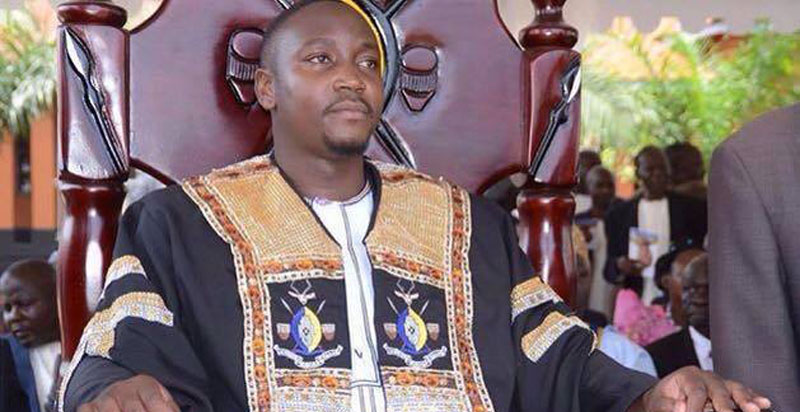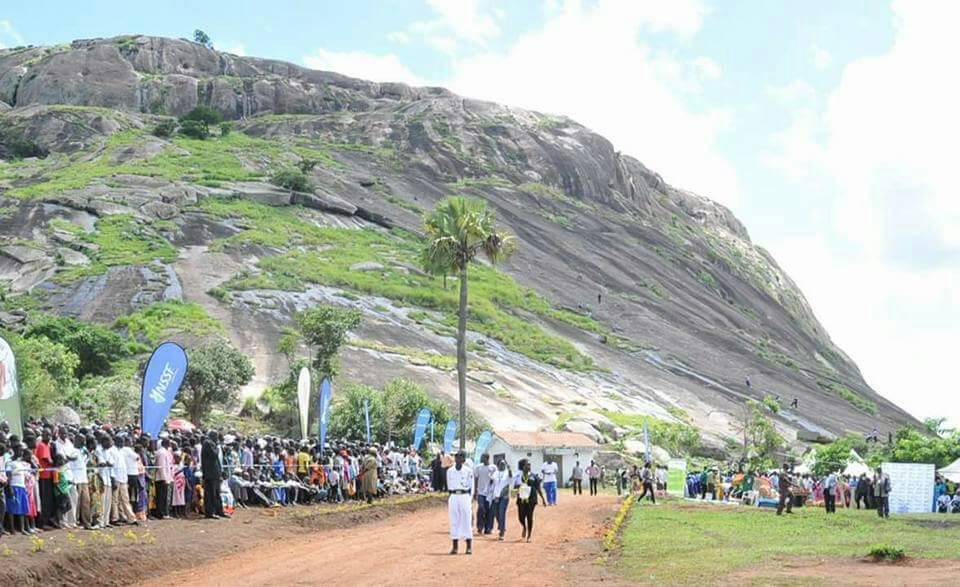Basoga people and culture
Basoga people and culture : Busoga is a traditional Bantu kingdom and cultural institution which promotes popular participation and unity among the people of the region through development programs to improve their standard of living and therefore assist the Kyabazinga in the day to day running of the Kingdom.

Busoga means the land of Basoga and comprises of eight districts Kamuli, Iganga, Bugiri, Mayuge, Jinja, Luuka, Kaliro and Busiki, Jinja being the industrial and economic hub of Busoga. Busoga is bordered on the north by shallow Lake Kyoga – separating it from Lango, on the west by the Victoria Nile – separating it from Buganda, on the south by Lake Victoria – separating it from Tanzania and Kenya and on the east by the Mpologoma River – separating it from smaller tribal groups such as the Adhola, Bugwere and Bugisu. It also includes several islands in Lake Victoria, such as Buvuma Island.
The Kyabazinga
Busoga is ruled by the IseBantu Kyabazinga who is currently William Kadhumbula Gabula Nadiope iv the Grandson to Wilberforce Kadhumbula Nadiope, former Vice President and also Kyabazinga of Busoga kingdom. In 1995, the government restored monarchies in Uganda in Article 246(1) of the constitution of Uganda. On 11 February 1996, Henry Wako Muloki was reinstated as Kyabazinga Isebantu of Busoga.

Muloki’s achievements included programs for youth, the elderly, and the poor and the education of girls. Although the Royal Chiefs of Busoga at first elected Edward Columbus Wambuzi, Muloki’s son, as Kyabazinga of Busoga, the election was contested due to lack of quorum – at least eight chiefs and thus electing later Gabula Nadiope IV with ten out of eleven chiefs and was crowned on 13 September 2014.
Political structure
The Busoga Royal Council is composed of the 11 Traditional leaders of Busoga. The heads of five royal families and the six tribal chiefs.
| Title | Principality / Chiefdom | Head |
| Zibondo | Bulamogi | G. W. Napeera |
| Gabula | Bugabula | William Nadiope |
| Ngobi | Kigulu | Izimba Gologolo |
| Tabingwa | Luuka | W. Tabingwa Nabwana |
| Nkono | Bukono | C. J. Mutyaba Nkono |
| Wakooli | Bukooli | David Muluuya Kawunye |
| Ntembe | Butembe | Badru Waguma |
| Menha | Bugweri | Kakaire Fred Menya |
| Kisiki | Busiki | Yekosofato Kawanguzi |
| Luba | Bunha | Juma Munulo |
| Nanhumba | Bunhole | John Ntale Nahnumba |
Kwandhula ceremony/ Introduction ceremony in Basoga
Kwandhula is conducted like a very well scripted and choreographed play in which all the actors are expected to know their respective roles. A well-organized one has to follow a given protocol where things flow in a given order. The following is an illustration of a typical program of a kwadhula ceremony in Buganda:
- Abatambuze bali ku mulyango (when the groom’s party arrive at the gate, they are considered to be “travelers and strangers” and they have to seek permission to be granted entry by the “father’s mouth”)
- Abagenyi bayingidde (they make their entry into the compound after being given leave to do so)
- Abagenyi batudde – abaana balamusa (the visitors are shown where to sit and then the bride’s siblings emerge in a procession to greet them)
- Abagenyi banyonyola ekibaleese (the visitors explain their mission through the “groom’s mouth” who gives the reason (ensonga) of the visitors’ trip)
- Ekyaleese abagenyi kimanyibwa (The aunt who invited the visitors (Senga Ow’ensonga) admits after she is “ultimately found” and reveals the visitors’ mission)
- Abagenyi baleeta enjogeza (the visitors have to ‘bribe’ the hosts with a “conversation drink” or mouth or throat opener)
- Okw’ogera ebikwaata ku mulenzi (the “groom’s mouth” presents the groom’s family background, ancestry, and achievements)
- Olukiiko lulamusa (Uncles, aunts, Jajjas, and “neighbors” in the assembly separately greet the visitors – the women among the visitors kneel during each greeting) 31
- Okw’ogera ebikwaata ku muwala (The “father’s mouth” presents the bride’s family background, ancestry, and achievements)
- Okusiima ebirabo (The “groom’s mouth” asks for permission to show their appreciation of the great job that the family has done in bringing up their beautiful and intelligent daughter – then presents gifts for the father, mother, muko, Ssenga, other aunts, grandparents, etc.
- Okuyingira mu nju – okulya entaba luganda (A party of 4-5 visitors, including the groom and the “groom’s mouth”, enter the house for a 10-20-minute private briefing by the uncles and aunts and to formally accept the groom as a “son” – roasted coffee beans and water drinks are shared to “seal Oluganda”.
- Okulya ekijjulo (The tone of exchanges changes to a family conversation – plans for the main feast are announced and the groom is accompanied by another team to eat inside the house, but not with the parents)
- Obusiimo, empeta ne cake (Additional presents, photography, engagement ring exchanges, and cutting of a cake may take place at this time – all these are optional and not required by Ganda culture)
- Okusibuula (The visitors ask for permission to “go walk around and get to know the village” and after permission, they leave for home.
Attractions in Busoga Region
Budhumbula shrine and palace
It is 2km from Kamuli on the Kamuli-Jinja road, the site includes a shrine and the residence of former Kyabazinga William Wilberforce Kadhumbula Nadiope who died in 1976. The marble-covered shrine contains the graves of other members of the royal family, including Nadiope’s father and mother Yosia Nadiope and Nasikombi. Other graves in the shrine are those of his son, former Uganda government minister Wilson Nadiope who died in 1991, and his mother, Yuliya Babirye Nadiope who died in 2004. The main palace residence is a legacy of the British colonial government, which donated it in 1914.
Kagulu Rock
This was the first settlement area for the Bunyoro Basoga, led by Mukama. Although Kagulu’s cultural influence is widespread, its visible landmark is Kagulu Rock. The rock is between two roads which fork at its foot, leading to Gwaya and Iyingo. The rock has a clear view of almost all Busoga, with steps making it easier for visitors to reach the top. Kagulu Rock has been for a long time a major adventure and tourist attraction in Eastern Uganda. Previously, it had caught the curious eyes of the foreign NGO workers in the area, but with the advent of the local initiative to promote the site, Kagulu Rock is now a big attraction to all.

Source of the Nile, Bujjagali falls and Lake Victoria
The source of the Nile, the world’s second-longest river, at Lake Victoria was discovered by John Speke and is an internationally known attraction.
Southern Busoga is bordered by Lake Victoria; whose coastline runs from Jinja east to the Kenyan border. This former waterfall was submerged in November 2011 by the Bujagali Dam.


